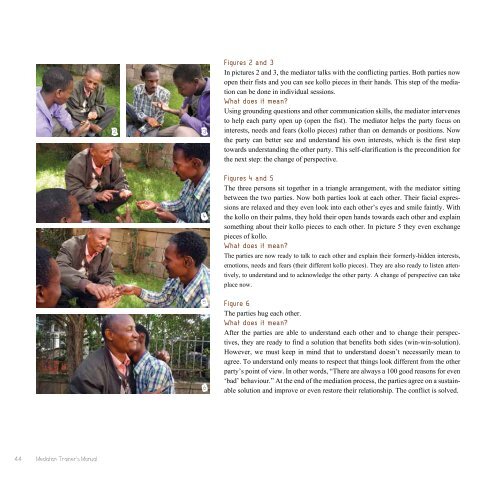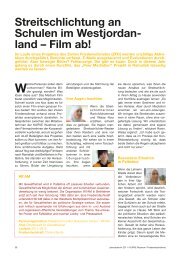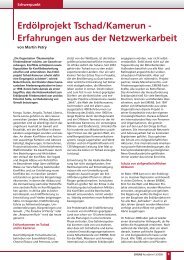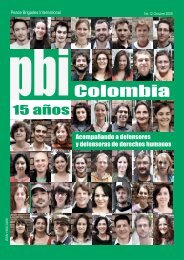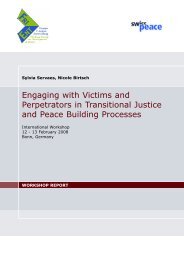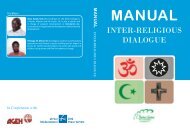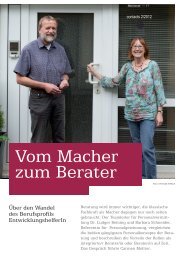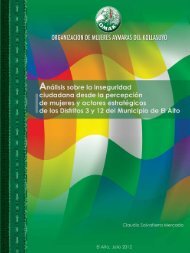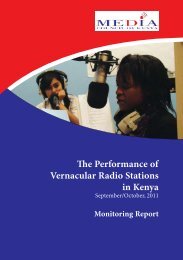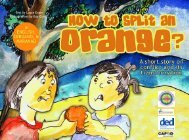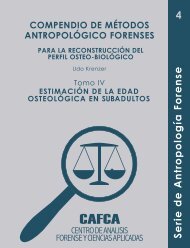Merging Ethiopian Wise-Counsel Mediation and Facilitative ...
Merging Ethiopian Wise-Counsel Mediation and Facilitative ...
Merging Ethiopian Wise-Counsel Mediation and Facilitative ...
- No tags were found...
You also want an ePaper? Increase the reach of your titles
YUMPU automatically turns print PDFs into web optimized ePapers that Google loves.
2 3456Figures 2 <strong>and</strong> 3In pictures 2 <strong>and</strong> 3, the mediator talks with the conflicting parties. Both parties nowopen their fists <strong>and</strong> you can see kollo pieces in their h<strong>and</strong>s. This step of the mediationcan be done in individual sessions.What does it mean?Using grounding questions <strong>and</strong> other communication skills, the mediator intervenesto help each party open up (open the fist). The mediator helps the party focus oninterests, needs <strong>and</strong> fears (kollo pieces) rather than on dem<strong>and</strong>s or positions. Nowthe party can better see <strong>and</strong> underst<strong>and</strong> his own interests, which is the first steptowards underst<strong>and</strong>ing the other party. This self-clarification is the precondition forthe next step: the change of perspective.Figures 4 <strong>and</strong> 5The three persons sit together in a triangle arrangement, with the mediator sittingbetween the two parties. Now both parties look at each other. Their facial expressionsare relaxed <strong>and</strong> they even look into each other’s eyes <strong>and</strong> smile faintly. Withthe kollo on their palms, they hold their open h<strong>and</strong>s towards each other <strong>and</strong> explainsomething about their kollo pieces to each other. In picture 5 they even exchangepieces of kollo.What does it mean?The parties are now ready to talk to each other <strong>and</strong> explain their formerly-hidden interests,emotions, needs <strong>and</strong> fears (their different kollo pieces). They are also ready to listen attentively,to underst<strong>and</strong> <strong>and</strong> to acknowledge the other party. A change of perspective can takeplace now.Figure 6The parties hug each other.What does it mean?After the parties are able to underst<strong>and</strong> each other <strong>and</strong> to change their perspectives,they are ready to find a solution that benefits both sides (win-win-solution).However, we must keep in mind that to underst<strong>and</strong> doesn’t necessarily mean toagree. To underst<strong>and</strong> only means to respect that things look different from the otherparty’s point of view. In other words, “There are always a 100 good reasons for even‘bad’ behaviour.” At the end of the mediation process, the parties agree on a sustainablesolution <strong>and</strong> improve or even restore their relationship. The conflict is solved.44 <strong>Mediation</strong> Trainer’s Manual


